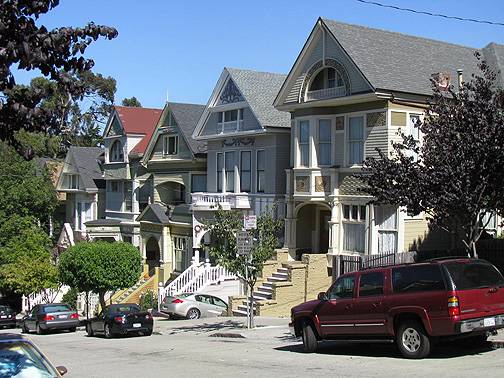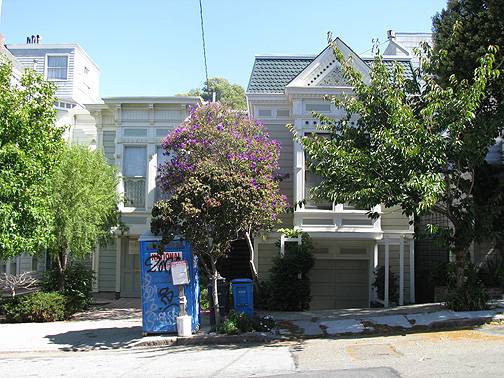Lyon Street between Oak and Haight: Difference between revisions
(New page: Image:9-lyon-joplin 4325.jpg '''East side of Lyon between Page and Oak, 2008.''' ''Photo: Chris Carlsson'' Before turning RIGHT (SOUTH) ON LYON, look north down Lyon towards the Pan...) |
m (Protected "Lyon Street between Oak and Haight": primary source [edit=sysop:move=sysop]) |
||
| (One intermediate revision by the same user not shown) | |||
| Line 1: | Line 1: | ||
'''<font face = Papyrus> <font color = maroon> <font size = 4>Primary Source</font></font> </font>''' | |||
[[Image:9-lyon-joplin 4325.jpg]] | [[Image:9-lyon-joplin 4325.jpg]] | ||
Latest revision as of 20:19, 8 January 2009
Primary Source
East side of Lyon between Page and Oak, 2008.
Photo: Chris Carlsson
Before turning RIGHT (SOUTH) ON LYON, look north down Lyon towards the Panhandle. The row houses on the right side of the street are also a Rountree development. The Rountree Brothers did not, of course, realize that their efforts would sixty years later provide home and shelter for Janis Joplin (middle building with white curving balcony).
26-32 Lyon Street, between Page and Haight, 2008.
Photo: Chris Carlsson
WALK SOUTH ON LYON towards Haight Street. An alternative to tract homes for families with moderate incomes was the "Pelton house." In a series of newspaper articles (later reprinted in a book, Cheap Dwellings) architect John C. Pelton, Jr. published "trustworthy and economic plans for families of moderate means." The homes could be built for as little as $600 and became popular despite the criticisms of shunned architects. Often home builders would take Pelton plans and adopt these plans by additions and subtractions to fit particular needs. The homes at 26 and 32 Lyon are modified Peltons.


